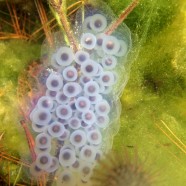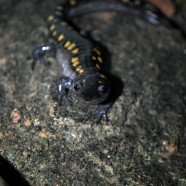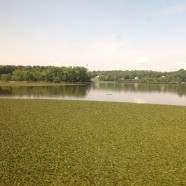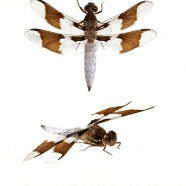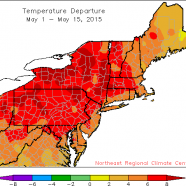Do you know your amphibian egg masses?
Despite the snow, the internal clocks of many amphibians are already set to spring. As a result, a number of them have already journeyed from the safety of their winter refuges to nearby pools and ponds to breed and deposit their eggs. This past Friday, prior to the weekend storm, I spent time exploring some local water bodies and found a plethora of these kinds of eggs. Any idea of what these little eggs will eventually turn into? I’ll give you a hint, the bottom picture shows both eggs and spermatophores. If you guessed Spotted Salamander (Ambystoma maculatum), you would be correct!...
Read MoreCould it Be That Time Already?!
Our winter weather has been getting stranger by the day! This week we are going to see daytime temperatures in the mid 60’s and overnight temps in the low 40’s and 50’s with possible rain. And you know what that could mean right? Amphibians could potentially begin their migrations to their vernal breeding pools within the next few days! This time last year we were still buried in snow and were still experiencing some of the winds and weather from the “polar vortex.” Due to the extreme cold last year, it wasn’t until early April when we saw spotted...
Read MoreWater Chestnut Infestation
Last week while I was traveling to Connecticut and Rhode Island (I’ll be posting about this soon!), I had the opportunity to get a good look at the Hudson River in eastern New York and see first hand the water chestnut infestation that has taken over much of the waterway. When most people hear of water chestnut, they often think of the slices of white vegetables in your stir fry mix or chicken noodle soup. While that is indeed water chestnut, its not the kind that we are necessarily concerned about. Water chestnut (Trapa natans) is an aquatic plant native to western Europe, Africa and...
Read MoreCommon Whitetail
Here’s the Common Whitetail (Plathemis lydia), certainly one of the more common dragonflies found in ponds, lakes, and waterways at this time of the year. More and more species are being seen flying everyday in the Northeast and Sean will be trying to show you as many as he can in beautiful displays like this one. Photographed by RTPI Affiliate Sean Graesser for the Meet Your Neighbours global biodiversity project in Connecticut for the Roger Tory Peterson Institute of Natural History.
Read MoreScorching May
The first half of the month of May 2015 was a quietly scorching one, with the heat turned all the way up in the Northeast. You may not believe it based on the outdoor feel of our day to day weather, but the entire region was far warmer than usual. While we did not have the extreme highs or actual heat waves, a stretch or days well into the 90s or anything particularly memorable, we have been consistently warmer than average for our highs and often above the long-term lows. The Northeast Regional Climate Center map here shows us the tale. The coolest part has been sections of Maine which were...
Read More



